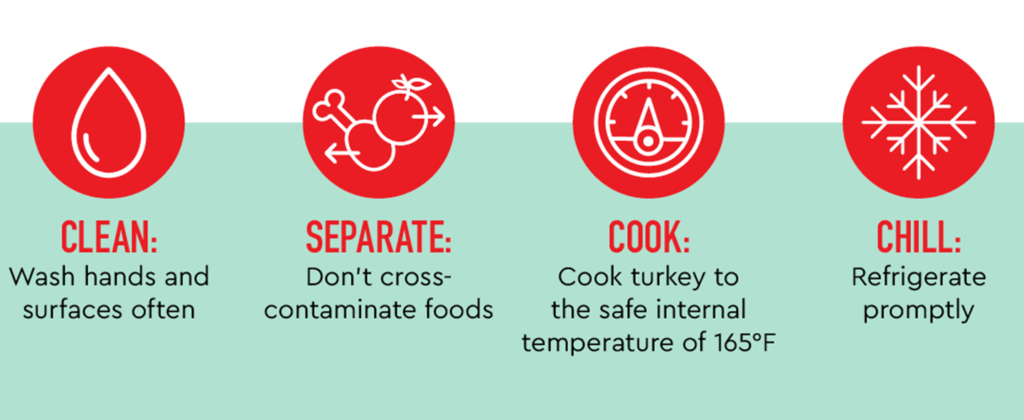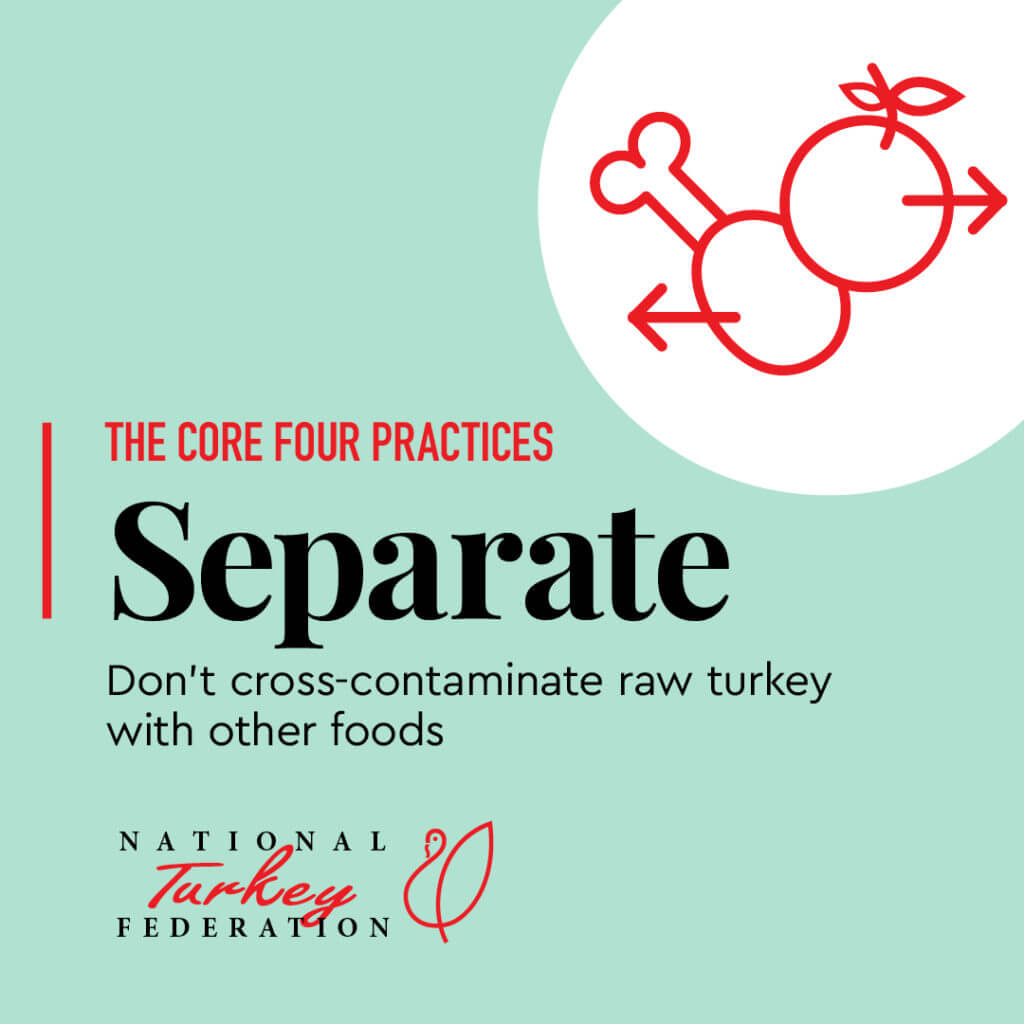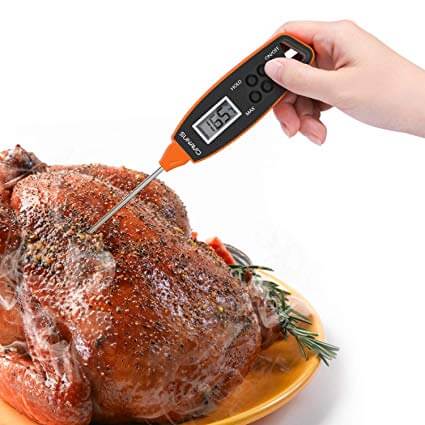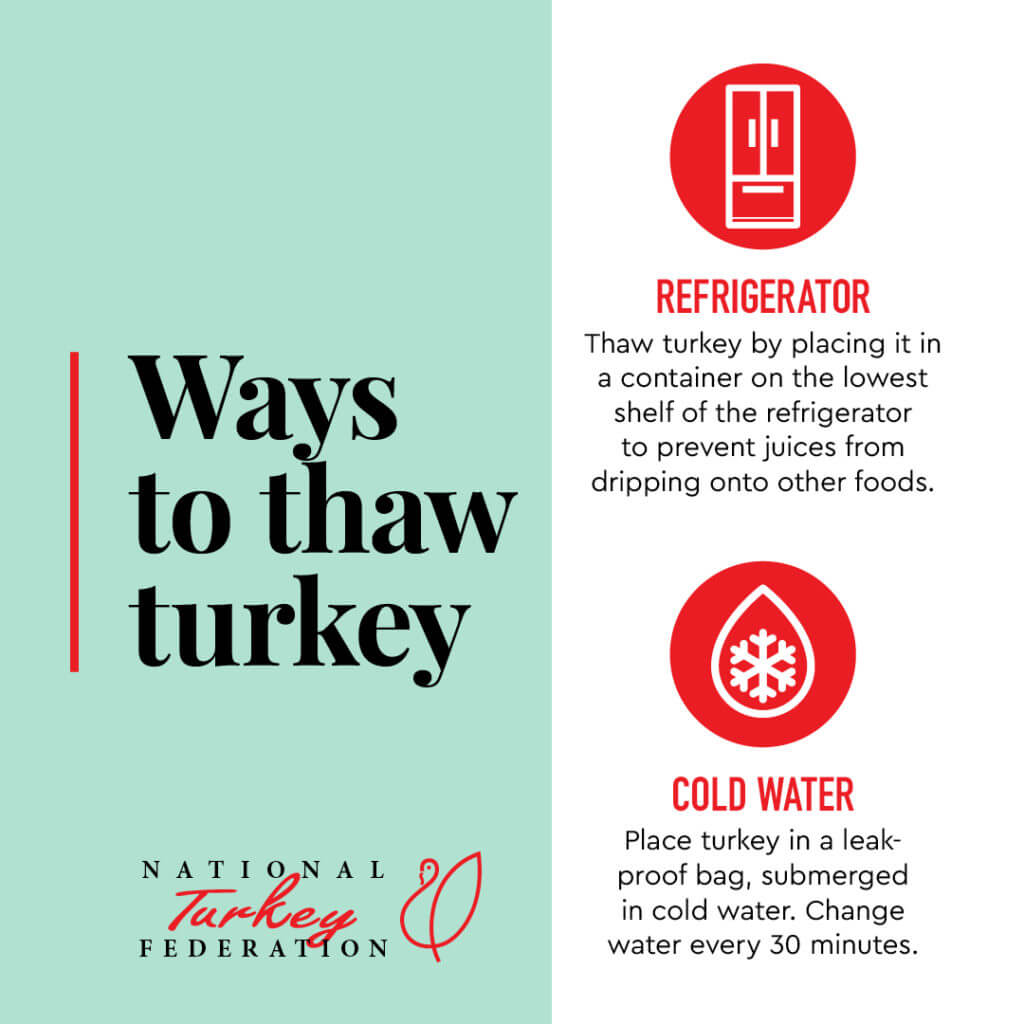Food Safety When Cooking with Turkey
Food safety is a top priority when you’re in the kitchen. Just a few simple steps will help make sure your food is ready for the table and you and your loved ones stay healthy.

It’s simple, really! When cooking with turkey, as with all fresh products, consumers should wash their hands, surfaces and cooking utensils, avoid cross-contamination with other foods, cook food to a proper internal temperature and refrigerate leftovers promptly to eliminate food safety risks.
When in doubt, following the Core Four Food Safety Practices will help protect you from foodborne illnesses. Just remember, Clean, Separate, Cook and Chill!
Clean – Hands and Surfaces

In the kitchen, handwashing is a critical step in preparing healthy, safe meals and preventing foodborne illnesses. Wash hands with soap vigorously before and after handling raw poultry.
Follow these steps from the CDC’s Handwashing Guide to wash your hands correctly every time:
- Wet your hands with clean, running water (warm or cold), turn off the tap and apply soap.
- Lather your hands by rubbing them together with the soap. Be sure to lather the backs of your hands, between your fingers and under your nails.
- Scrub your hands for at least 20 seconds. Need a timer? Hum the “Happy Birthday” song from beginning to end twice.
- Rinse your hands well under clean, running water.
- Dry your hands using a clean towel or air dry them.
Wash used cutting boards, dishes, utensils and countertops with hot, soapy water after preparing each food item.
Note: Consider using paper towels to clean kitchen surfaces and dry your hands. If you use cloth towels, wash them often in the hot cycle of your washing machine.

Separate – Prevent cross-contamination in the kitchen
Use separate cutting boards for raw poultry and any other food that does not require cooking. Carefully clean all cutting boards, countertops and utensils with soap and hot water before and after preparing raw poultry.
Keep raw poultry separate from ready-to-eat foods.
Don’t rinse your turkey! Rinsing your turkey can spread harmful germs and bacteria around the kitchen and increases the risk of cross-contamination.
Cook – Cook turkey to internal temperature of 165°F

Use a meat thermometer to verify that your turkey has reached the safest internal temperature of 165°F. For a whole turkey, the temperature should be checked in at least three places: the innermost part of the thigh, the innermost part of the wing and the thickest part of the breast. If you stuffed your turkey, the innermost part of the stuffing should also reach 165°F.
When cooking turkey burgers, use an instant-read food thermometer inserted into several parts of the patty – including the thickest part. For more food safey tips for safey preparing ground turkey recipes, click here.
Never place cooked turkey on an unwashed plate that was used to hold raw meat. Sanitize meat thermometers in-between tests.
Leftover foods or ready-to-eat foods should be cooked until steaming hot. You can also use your meat thermometer to make sure they reach 165°F! Visit the Temperature Matters page for helpful meat thermometer guidelines.
Chill – Refrigerate promptly and properly

Refrigerate perishable foods as soon as possible. According to USDA guidelines, discard any uneaten food after being left out for more than two hours.
Freeze raw turkey that will not be cooked before the “use-by date” on the packaging, or within two days of purchase.
Thaw turkey in the refrigerator, ideally in a bowl or other dish on the lowest shelf. Never thaw or marinate foods on the counter.
Once cooked, slice turkey off the bone (you can leave the leg and thigh intact), cover and refrigerate promptly.
Leftovers can be kept in the refrigerator for 3-4 days or frozen for 3-4 months.
Why is food safety important?
Bacteria are naturally present in the environment, and, as a result, raw poultry products may contain bacteria. While foodborne bacteria can’t be seen, tasted or smelled, it can be harmful if ingested.
You can ensure your turkey is safe to eat through thorough cooking – including verifying your turkey reaches an internal temperature of 165°F – proper storage and careful handling. For more questions regarding food safety, check out the below resources:
- Partnership for Food Safety Education – Fight Bac!
- Food Safety.gov
- Ask USDA
- USDA Meat & Poultry Hotline: 888-MPHotline (888-674-6854)
